Glenn D. Lowry is the David Rockefeller director of the Museum of Modern Art. He stepped into this position in 1995, becoming the sixth director of the globally renowned institution. Prior to joining MoMA, Mr. Lowry served in directorial and curatorial roles for the Smithsonian Institution and the Art Gallery of Ontario. A prominent art historian, Mr. Lowry is on the advisory council of the Department of Art History and Archaeology at Columbia University. He serves on the boards of a number of cultural institutions, including the Andrew W. Mellon Foundation Board of Trustees and the American Academy of Arts and Sciences.
Heather Lubov
Executive Director, City Parks Foundation
Heather Lubov is the executive director of the City Parks Foundation, a nonprofit organization that offers free programs in neighborhood parks across New York City. Prior to joining City Parks Foundation, Ms. Lubov was the chief development officer and vice president for planning at Park Avenue Armory. After receiving her M.P.A. in nonprofit management from NYU, Ms. Lubov began her career as the director of government funding at Partnership for the Homeless, and gained further experience as vice president of development for the New York Public Library.
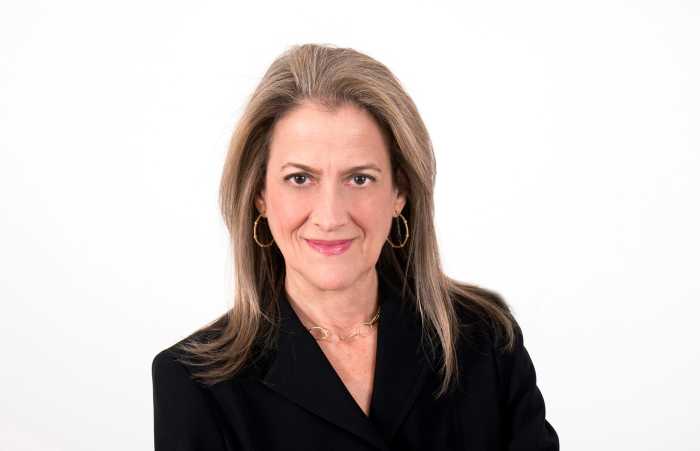
Mara Manus
Executive Director, New York State Council on the Arts

Mara Manus is the executive director of the New York State Council on the Arts. She has served as executive director of the Public Theater and as a program officer in economic development at the Ford Foundation. As the founder of Manus + Co, she oversaw the launch of cultural organizations and worked with nonprofits to devise strategies for leadership and organizational development. She holds a B.A. from Stanford University.
What do you wish more people understood about the tourism and hospitality industry?
That arts, tourism, and hospitality are inseparable. Some people may not be aware of the size of our state’s creative economy; most recent available data reflects an industry of $126 billion, constituting 7.3% of the New York economy, and more than half a million arts workers. From the Met Museum in NYC to Geva Theatre in Rochester, the arts play an outsized role in the tourism and hospitality economies. A single dance performance, theater production, or exhibition has a direct positive economic impact on our Main Street stores, restaurants, and hotels.
How is the industry recovering after the pandemic?
We are facing a multi-year recovery. A great majority of the sector has reopened, and audiences are still in the process of returning. No one will ever take for granted the exhilaration of an in-person arts experience. Some arts groups pivoted to online programming, building new audiences and supporters from across the globe. The creative sector continues to inspire us all with their resilience.
What is the most memorable trip you’ve ever taken, or the most memorable meal you’ve ever eaten?
The Art Islands of Japan, which started as an Economic Development investment, offers unforgettable immersive art experiences in magical settings. The arts riches across NYS cannot be overstated. One of my favorite arts destinations is Buffalo; from the Saarinen designed Kleinhans Hall of the Buffalo Philharmonic, to one of Frank Lloyd Wright’s masterpieces,the Darwin Martin House, to the world-renowned Abstract Expressionist collection at the Albright Knox — New York is truly the State of the Arts!
What is one tourist destination that all visitors should add to their itinerary?
All corners of our state have world class experiences! This is always an impossible choice for me — from Shakespeare in Central Park to the Brooklyn Academy of Music, from the George Eastman Museum in Rochester to the Corning Museum of Art, from Glimmerglass to Storm King — we directly support over 1,000 organizations that would be perfect on any art-lover’s itinerary.
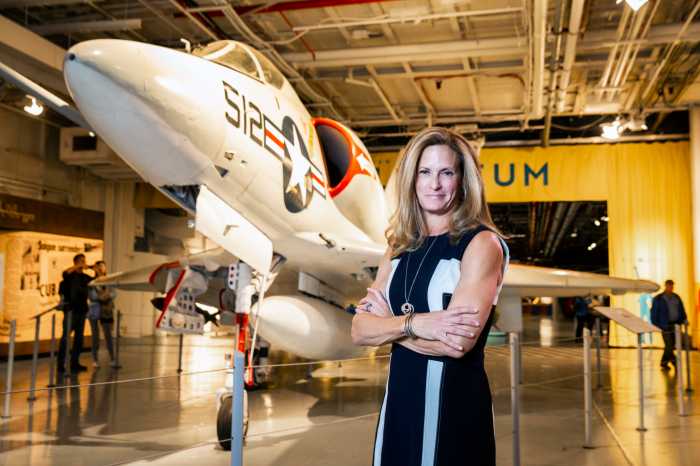
Susan Marenoff-Zausner
President, Intrepid Museum

Susan Marenoff-Zausner, president of the Intrepid Museum since 2011, is the first woman to hold the position. She’s overseen a period of remarkable growth, asset acquisitions, restoration, and recovery. Yearly attendance has grown to one million visitors, ranking the Intrepid Museum among the city’s top 10 cultural attractions. Marketing revenue has grown annually, and philanthropic giving has increased exponentially. The Museum’s robust and award-winning STEAM education programs directly reach more than 40,000 young people each year. Intrepid has become a cultural leader in inclusivity and accessibility.
What do you wish more people understood about the tourism and hospitality industry?
It takes the proverbial village of dedicated people behind the scenes to provide the world-class experience that our industry is renowned for. Speaking for our institution, it’s everyone from the IT team to curators to front-of-house staff who not only are great at their jobs but understand that in this industry the satisfaction of the visitors is paramount to our success. They work diligently to ensure that in everything we do, we put our guests top of mind.
How is the industry recovering after the pandemic?
We are cautiously optimistic. We are starting to see more vibrancy and energy return to the city which is encouraging. Some of the markers like hotel occupancy are increasingly positive. Our attendance has exceeded projections. Things are starting to feel more normal. Our number one priority, as we continue to adjust to the new reality, remains putting the health and safety of employees and visitors first.
What is the most memorable trip you’ve ever taken, or the most memorable meal you’ve ever eaten?
I’ve been fortunate to travel to many places in the world in my past life in the sports industry, but right here in New York, Chef’s Table at Brooklyn Fare in Hudson Yards is a memorable and amazing restaurant. That’s if you can find it. You have to navigate through a grocery store to get there, which adds to the experience. It’s truly a special place.
What is one tourist destination that all visitors should add to their itinerary?
That’s easy – the Intrepid Museum. This is our 40th anniversary year, so lots of new and exciting things are happening at the Museum, from new exhibitions to compelling and dynamic programming exploring history and innovation. Most know us for the aircraft carrier Intrepid, a National Historic Landmark. The Museum also features the space shuttle Enterprise, the Cold War-era submarine Growler and a collection of 28 aircraft including the world’s fastest commercial jet, and a supersonic British Airways Concorde. In June, we will unveil a Skyray on our flight deck, the very plane that flew off Intrepid.
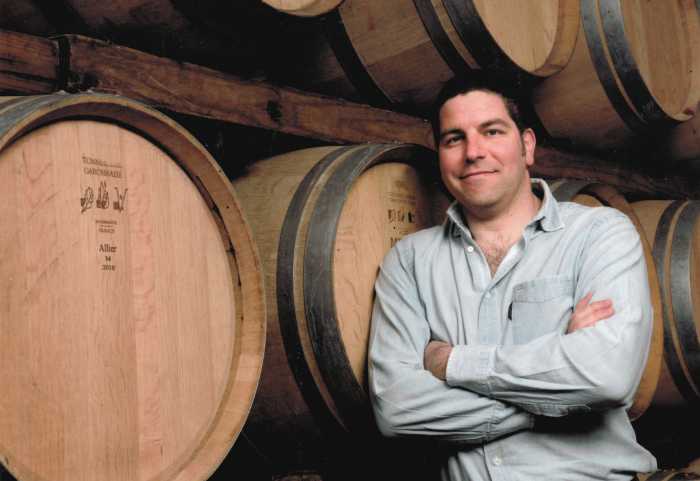
Kareem Massoud
President, Long Island Wine Country

Kareem Massoud has been involved in his family’s winemaking business since its inception in 1983. Kareem is a second-generation winemaker at Paumanok Vineyards, having learned the trade under his father’s tutelage. His international travels to South Africa, Germany, France, New Zealand, and Chile have given him a wide range of experience in the art of winemaking. Kareem is winemaker at Palmer Vineyards and Paumanok Vineyards and presently serves as president of Long Island Wine Country.
What do you wish more people understood about the tourism and hospitality industry?
The hospitality industry attracts people who enjoy making other people happy. Many people appreciate this dedication to service and many take it for granted. As we move into the future, it is my hope and expectation that those who have dedicated their lives to hospitality will find greater satisfaction from providing their guests with outstanding hospitality experiences.
How is the industry recovering after the pandemic?
The pandemic has at once created chaos, angst, anxiety and tragedy, but it has also yielded creativity, opportunity and success. The pandemic has been a test for all, but especially for those in the hospitality sector. It has forced leaders to reexamine their business models and practices and in some cases to completely reinvent themselves. Ultimately, in spite of all the challenges, it seems to have produced good results for the industry and for consumers.
What is the most memorable trip you’ve ever taken, or the most memorable meal you’ve ever eaten?
I visited France and Spain with my wife, Karen, in 2014. After spending special days visiting relatives and touring Paris, we spent a week in the Loire Valley visiting wineries in Vouvray, Chinon and Savennières before continuing on to Toulouse where we met up with friends. We enjoyed the food, wine, Armagnac and culture in Gers and Toulouse. Next, Barcelona. There we concluded our trip with delicious winery visits and fine dining experiences.
What is one tourist destination that all visitors should add to their itinerary?
The East End of Long Island! In particular, the North Fork of Long Island is the last outpost of a rich agricultural heritage on Long Island. The bucolic character of the East End attracts New Yorkers as well as tourists from around the world to experience the natural beauty of the area — farms, vineyards, parks and preserves, beaches — and enjoy the food from land and sea. The evolving food and wine culture is all about creating memorable experiences.
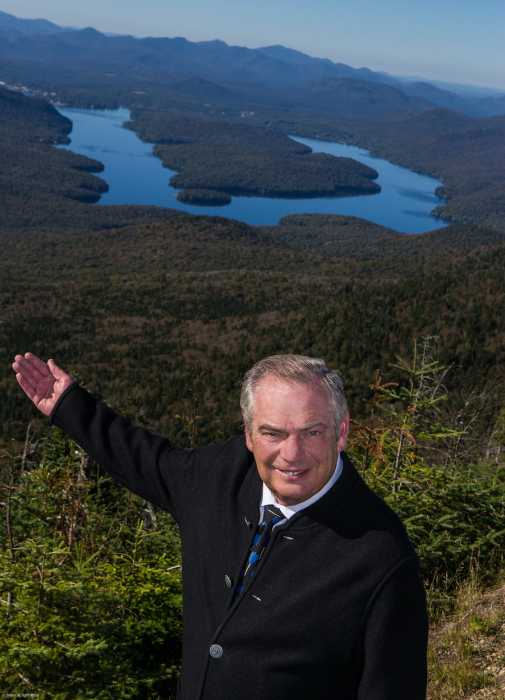
James McKenna
President and CEO, Regional Office of Sustainable Tourism

James McKenna is president and CEO of the Regional Office of Sustainable Tourism. Mr. McKenna is the co-chair of New York’s North Country Regional Economic Development Council and has served on many nonprofit boards focused on economic development, sports and tourism, and environmental conservation. In 2022 ROOST led development of a destination marketing and management plan, balancing tourism requirements with the needs of residents, community organizations, business and environment.
What do you wish more people understood about the tourism and hospitality industry?
Tourism must play a role in local economic development. Travel and tourism is projected to grow and expand over the coming years. This may result in destinations experiencing negative impacts of over-tourism on communities and the environment — even when that is the opposite of what is intended. Destination marketing and management organizations must expand tourism benefits beyond the expected, positive economic impacts.
The tourism industry must be engaged in solving community economic development issues including: housing, workforce development, childcare and environmental sustainability. Tourism marketing and management organizations must play a key role in their destination’s overall resident satisfaction.
How is the industry recovering after the pandemic?
Pent-up leisure travel demand bodes well for the industry in the short-term. Destination marketing and management will determine its long-term sustainability.
Many drive-to destinations have seen an increase in visitors since pandemic restrictions have eased. This is forecasted to continue as people seem comfortable traveling to destinations that are within driving distance from their home.
Business travel has yet to rebound due to the acceptance and adoption of virtual meetings and conferences. There has also been an increase in employees working from home, possibly translating into visitors working while on vacation, once again changing the idea of a traditional vacation.
What is the most memorable trip you’ve ever taken, or the most memorable meal you’ve ever eaten?
My most memorable trip was traveling to Sarajevo for the 1984 Olympic Winter Games. This marked my first time traveling to Europe and was my first interaction with a vastly different culture. This trip was my first exposure to the European “old town” atmosphere. Since then, I have continued to travel throughout Europe exploring many different cities and their “old towns” — I enjoy becoming immersed in the culture.
What is one tourist destination that all visitors should add to their itinerary?
The Adirondack Park is the largest park in the continental U.S., covering over six million acres. The protected, rugged wilderness along with charming communities provides the perfect vacation destination. The Adirondacks are easily accessible, and within a day’s drive for over 25% of the entire North American population.
The Adirondacks represent a powerful symbol for conservation — the region is a leader in environmental sustainability, with organizations, including the Regional Office of Sustainable Tourism, working to care for, protect, study and educate about the importance of caring for the region, balancing tourism and a place that many call home.
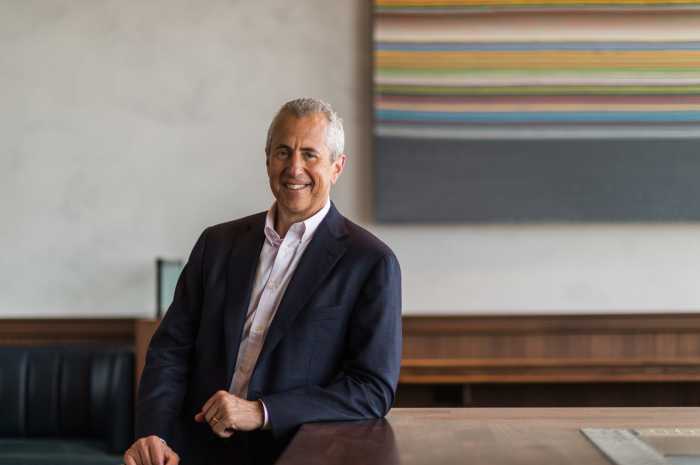
Danny Meyer
CEO, Union Square Hospitality Group

Danny Meyer’s Union Square Hospitality Group comprises some of New York’s most beloved and acclaimed restaurants, including Gramercy Tavern, The Modern, Maialino, Ci Siamo and more. Danny and USHG founded Shake Shack, the modern-day “roadside” burger restaurant, which became a public company in 2015. USHG also offers large-scale event services, foodservice solutions for public and private institutions, industry consulting, and educational programming.
What did you wish more people understood about the tourism and hospitality industry?
Our industry has a greater impact on New York City’s economy than any other, both in terms of the diversity and number of people we employ to the number of people who choose to live, work, and visit New York. Subtract our cultural institutions, live performances, shopping, hotels, and restaurants – and life would look very different here.
How is the industry recovering after the pandemic?
This is an irrepressible industry of the hardest working, most hopeful entrepreneurs in the world. Against a backdrop of the most challenging landscape our industry has experienced – with stop and start openings and closings, health challenges, full rents to pay – and a city that has not regained its pre-pandemic occupancy, restaurateurs are nonetheless finding ways to provide exciting food and drink and warm hospitality to a city that needs all of those things, more than ever.
What is the most memorable trip you’ve ever taken, or the most memorable meal you’ve ever eaten?
The most memorable trip I’ve ever taken was to Israel. Go for the history, archeology, and spirituality. Stay for exceptional food.
What is one tourist destination that all visitors should add to their itinerary?
Rome. I’m excited to travel the globe – to every continent, every clime, and every culture. But for me, nothing beats strolling (and eating my way) through this dynamic, living, eternal museum.
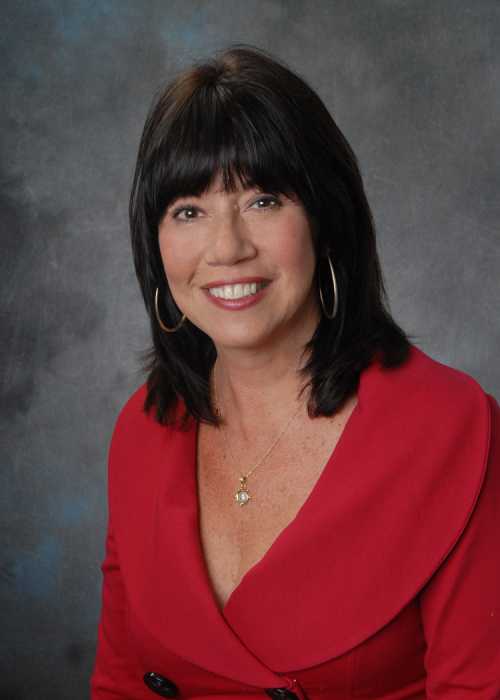
Deborah Milone
President, Hudson Valley Gateway Chamber of Commerce

Hudson Valley Gateway Chamber of Commerce President Deborah Milone has served in numerous community volunteer and formal capacities and has been recognized by local, county, and state governments for her community service. She has served on numerous community and municipal boards, including as board member vice chair for the Peekskill Business Improvement District; first woman president of the Peekskill Rotary Club and Paul Harris Fellow; and Community Advisory board member for the NYP/Hudson Valley Hospital Center. Before joining the Chamber, Ms. Milone was a district sales manager at Yellowbook, vice president of sales and marketing for Guide Communications and publisher of the Peekskill-Cortlandt Herald.
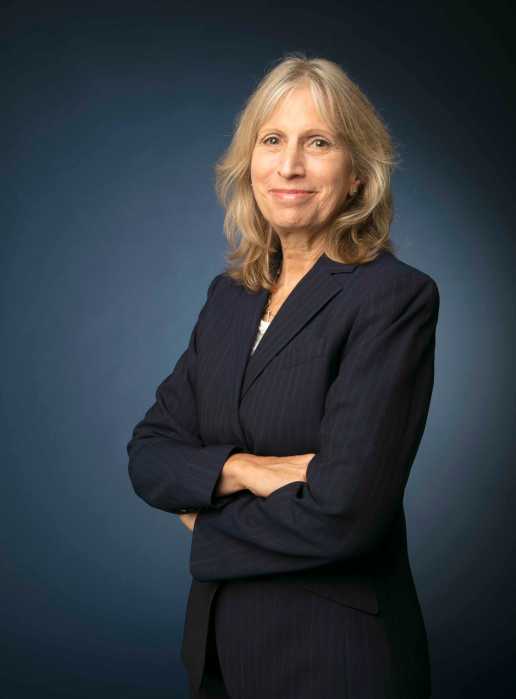
Louise Mirrer
President and CEO, New-York Historical Society

Louise Mirrer is president and CEO of the New-York Historical Society, New York’s first museum. Under her guidance, the institution has reinvigorated its commitment to greater public understanding of history and its relevance today, as well as to the support and encouragement of historical scholarship, and the education of young people. Mirrer holds a double Ph.D. from Stanford, a graduate Diploma from Cambridge, and a B.A. from the University of Pennsylvania.
What do you wish more people understood about the tourism and hospitality industry?
Many people do not understand how much of an economic driver the tourism and hospitality industries are. These industries are themselves major employers, so they contribute mightily to the economic wellbeing of many city residents. Tourists also pay taxes, though they make limited use of city services; apart from the money tourists spend on hotels, restaurants, cultural institutions, and theaters, the taxes they pay during their visit support residents and businesses. The strength of the tourism and hospitality industries also expands the city’s reputation nationally and abroad, encouraging others to visit after hearing positive reports from colleagues and friends.
How is the industry recovering after the pandemic?
Visitors have begun returning to museums, theaters, restaurants, bringing workers back and providing jobs for new employees. Each entity’s recovery helps another to succeed — tourists who return to the city stay in hotels, eat in restaurants, and visit theaters and museums.
What is the most memorable trip you’ve ever taken, or the most memorable meal you’ve ever eaten?
The most memorable trip I have taken was to the lower level of the New-York Historical Society, when the draft of President Lincoln’s Preliminary Emancipation Proclamation, written in Lincoln’s own hand, was on view. This extraordinary, and extremely fragile document is rarely displayed. It was a great privilege to have it at New-York Historical for a short time during the run of our award-winning exhibition, Slavery in New York.
What is one tourist destination that all visitors should add to their itinerary?
The New-York Historical Society! Where else can a visitor learn 400 years of New York history in a 17 minute multisensory film, see New York’s Liberty Bell, which pealed for the reading of the Declaration of Independence in New York in 1776, see the Picasso that hung in the famed Four Seasons restaurant for years, and find exhibitions about the lives and work of Robert A. Caro and Billie Jean King — in one beautiful New York City landmark?

Helana Natt
Executive Director, Greater New York Chamber of Commerce

Helana Natt was born in Summit, New Jersey, and was raised in Radnor, Pennsylvania. She attended George Washington University and majored in International Affairs. Her first job was working for the Philadelphia Chamber. For the past 25 years, Helana has served as the executive director for the Greater New York Chamber of Commerce. She brought the Chamber from 100 members to over 3,300 members and managed a database of over 40,000 business and civic leaders. She currently sits on New York City’s World Trade Committee.
What do you wish more people understood about the tourism and hospitality industry?
It’s estimated that more than 70 million tourists will visit New York City in 2025. New York tourism has the most significant impact on the food and beverage industry. Tourists spent $47 billion per year in New York before the pandemic. Visitors to New York tend to spend the most money on lodging. International tourists tend to spend four times more than domestic tourists.
20% of both domestic and international tourists visit New York for business purposes. Without tourism, the unemployment rate in New York would be 8.5% higher.
How is the industry recovering after the pandemic?
Tourism and Hospitality is not back where it was before the pandemic. When businesses bring back their employees to work at their offices, we will see an increase of revenue; also, working with the tourism boards throughout the world to state that New York City has safety measures to keep visitors safe will increase tourism.
What is one tourist destination that all visitors should add to their itinerary?
Walking through Times Square at night time; the lights and energy is something that everyone should experience.






